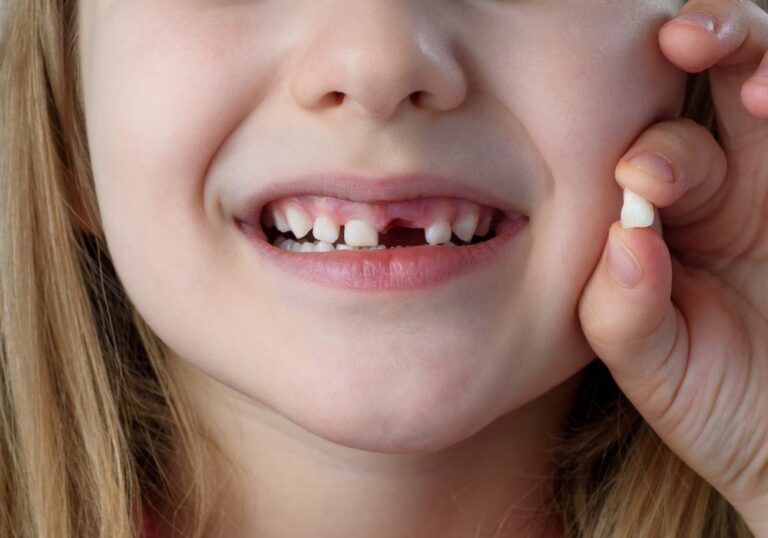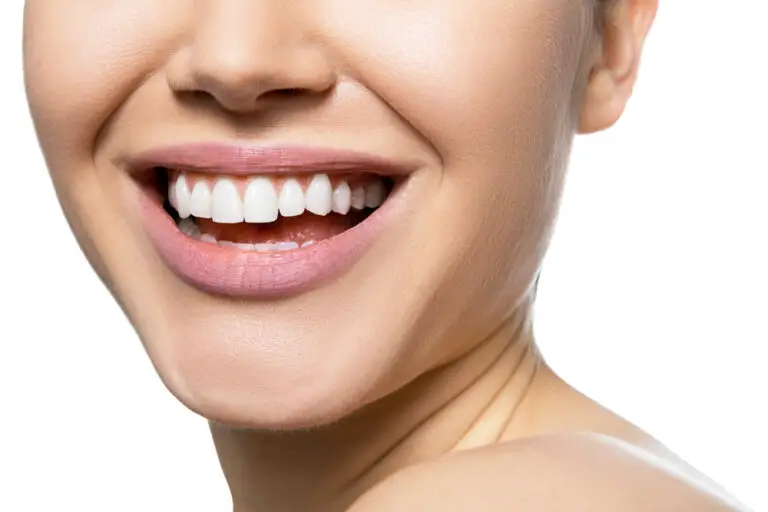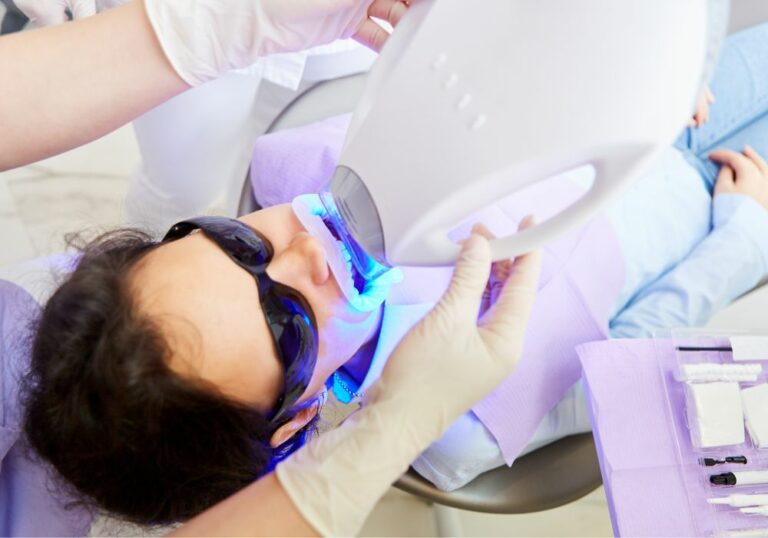Are you looking for a way to whiten your teeth without damaging your enamel? Teeth whitening is a popular cosmetic procedure that can help improve the appearance of your teeth. However, some teeth whitening methods can cause damage to your enamel, the protective outer layer of your teeth. Enamel protects your teeth from decay and damage, so it’s important to take care of it.
Fortunately, there are several ways to whiten your teeth without damaging your enamel. One option is to make dietary changes and eliminate foods that can stain your teeth. Foods and beverages that contain tannins, such as wine and tea, can cause staining. Coffee and dark-colored sodas can also cause discoloration. By avoiding these foods and beverages or brushing your teeth after consuming them, you can help prevent further staining.
Understanding Tooth Enamel
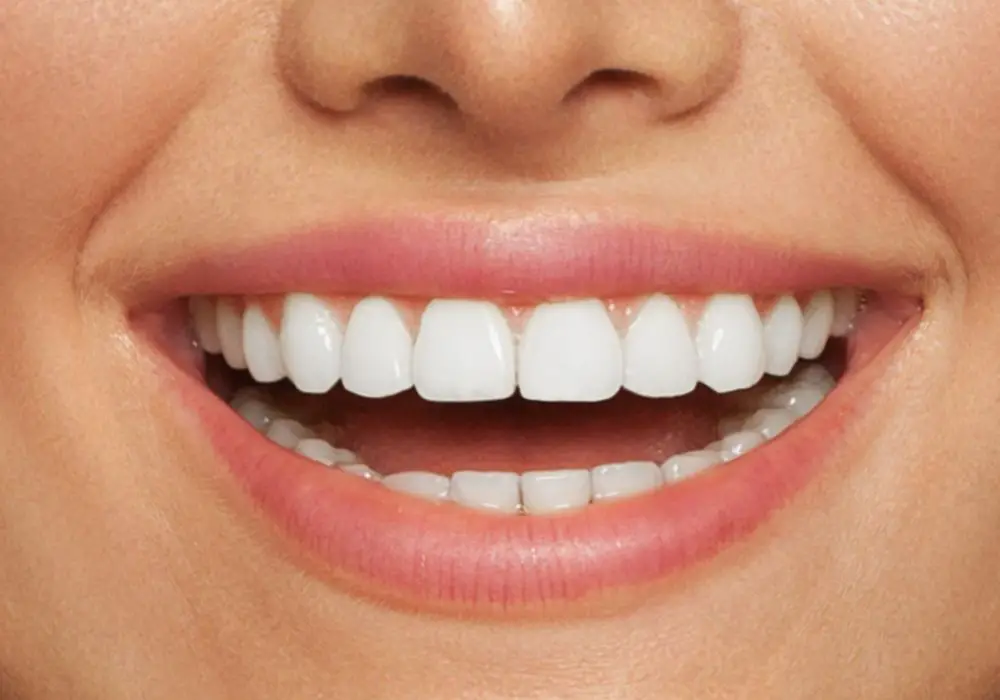
Tooth enamel is the hard, outermost layer of your teeth that protects them from decay and damage. It is the hardest substance in the human body, but it can still be damaged by acid erosion and other factors. Understanding tooth enamel is important when it comes to maintaining good oral health and preventing tooth decay.
Enamel is made up of minerals, primarily calcium and phosphate, that form a crystal structure. This structure gives enamel its hardness and durability. However, enamel is not alive, so it cannot regenerate once it is lost. This is why it is important to take care of your enamel and prevent damage.
Acid erosion is one of the main causes of enamel damage. Acidic foods and drinks, such as citrus fruits, soda, and sports drinks, can erode the enamel over time. Brushing too hard or using a hard-bristled toothbrush can also wear down the enamel. Additionally, teeth grinding and clenching can cause enamel to chip or crack.
To maintain healthy enamel, it is important to brush your teeth twice a day with a soft-bristled toothbrush and fluoride toothpaste. Flossing daily can also help remove plaque and prevent decay. Avoiding acidic foods and drinks, or rinsing your mouth with water after consuming them, can also help protect your enamel.
If you are looking to whiten your teeth, it is important to do so without damaging your enamel. Using natural methods, such as oil pulling or eating crunchy fruits and vegetables, can help whiten your teeth without harming your enamel. It is also important to talk to your dentist about safe and effective teeth whitening options.
Causes of Tooth Discoloration
There are several reasons why your teeth may become discolored over time. Some of the most common causes of tooth discoloration include:
- Food and Beverages: Consuming dark-colored foods and beverages such as coffee, tea, red wine, and soy sauce can stain your teeth over time.
- Tobacco Use: Smoking or chewing tobacco can cause yellow or brown stains on your teeth.
- Poor Dental Hygiene: Not brushing and flossing regularly can lead to plaque buildup, which can cause your teeth to appear yellow or brown.
- Genetics: Some people are born with naturally yellow or gray teeth due to genetics.
- Aging: As you age, the enamel on your teeth begins to wear away, which often results in a yellow appearance.
- Medications: Certain medications such as tetracycline and doxycycline can cause tooth discoloration, especially if taken during childhood when teeth are still developing.
- Dental Materials: Some dental materials such as amalgam fillings can cause grayish-black stains on your teeth.
It’s important to note that tooth discoloration can also be a sign of an underlying dental problem, such as tooth decay or gum disease. If you’re concerned about the color of your teeth, it’s best to consult with your dentist to determine the underlying cause and appropriate treatment options.
Natural Methods for Teeth Whitening
If you’re looking for ways to whiten your teeth without damaging your enamel, there are several natural methods you can try. These methods include making dietary changes, practicing proper oral hygiene, and using baking soda.
Dietary Changes
One way to prevent further staining of your teeth is to eliminate foods and beverages that contain tannins, such as wine and tea. Coffee, soda, and dark-colored berries can also stain your teeth. Instead, try incorporating more fruits and vegetables into your diet, which can help scrub away surface stains.
Proper Oral Hygiene
Practicing proper oral hygiene is essential for maintaining healthy teeth and gums. Brushing your teeth twice a day for at least two minutes with a fluoride toothpaste can help remove surface stains. Flossing daily can also help remove plaque and food particles from between your teeth.
Use of Baking Soda
Baking soda is a natural abrasive that can help remove surface stains from your teeth. You can mix baking soda with water to create a paste and brush your teeth with it once a week. However, it’s important not to use baking soda too frequently, as it can be abrasive and damage your enamel.
Overall, these natural methods can help whiten your teeth without damaging your enamel. However, it’s important to consult with your dentist before trying any new whitening methods, especially if you have sensitive teeth or existing dental problems.
Over-the-Counter Teeth Whitening Products
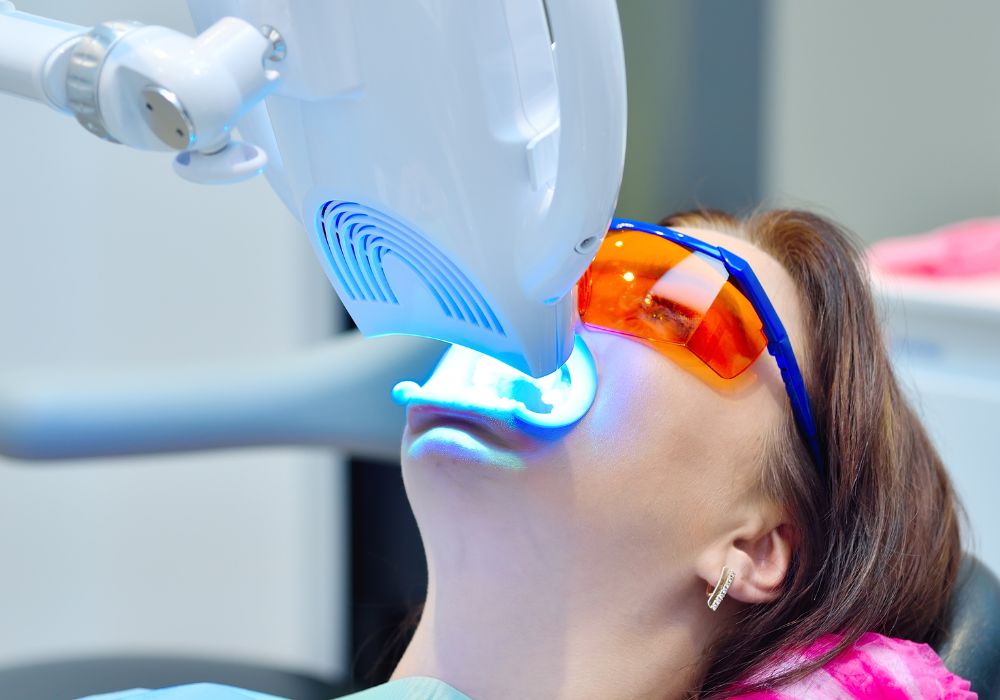
If you’re looking for an easy way to whiten your teeth at home, over-the-counter (OTC) teeth whitening products may be a good option for you. Here are some popular types of OTC teeth whitening products you can try:
Whitening Toothpastes
Whitening toothpastes are a popular choice for people who want to gradually whiten their teeth over time. They work by using mild abrasives to remove surface stains from your teeth. Some whitening toothpastes also contain hydrogen peroxide or other bleaching agents to help whiten your teeth even more.
When choosing a whitening toothpaste, look for one that has the American Dental Association (ADA) Seal of Acceptance. This means that the toothpaste has been tested and proven to be safe and effective for whitening your teeth.
Whitening Strips
Whitening strips are another popular option for at-home teeth whitening. They are thin, flexible strips that you apply directly to your teeth. The strips are coated with a bleaching agent, usually hydrogen peroxide, which helps to whiten your teeth.
To use whitening strips, simply apply them to your teeth and leave them on for the recommended amount of time. Most whitening strips are designed to be used once a day for a period of two to three weeks.
Whitening Gels
Whitening gels are a type of teeth whitening product that you apply directly to your teeth using a small brush or applicator. The gels contain a bleaching agent, usually hydrogen peroxide, which helps to whiten your teeth.
To use whitening gels, simply apply a small amount of gel to your teeth and leave it on for the recommended amount of time. Some whitening gels require the use of a special tray or mouthguard to help keep the gel in place.
It’s important to follow the instructions carefully when using any type of teeth whitening product, including OTC products. Overuse or misuse of these products can cause damage to your teeth and gums. If you have any concerns about using teeth whitening products, talk to your dentist before getting started.
Professional Teeth Whitening Methods
If you’re looking for a more powerful teeth whitening solution, professional teeth whitening methods may be the way to go. Here are some options you can consider:
- In-office bleaching procedures: This is the most expensive and quickest option for teeth whitening. Your dentist will apply a strong bleaching agent to your teeth and activate it with a special light. This procedure can whiten your teeth by several shades in just one session, but it can also cause tooth sensitivity and gum irritation.
- Dentist-supplied products for use at home: Your dentist can provide you with a custom-fitted tray and a bleaching gel to use at home. This option is less expensive than in-office procedures, but it can still produce great results. You’ll need to wear the tray for several hours a day for a few weeks to see results.
- Over-the-counter (OTC) whiteners: There are many OTC teeth whitening products available, such as whitening strips, gels, and toothpaste. These products are less expensive than professional methods, but they may not be as effective. Additionally, some OTC products can cause tooth sensitivity and gum irritation.
It’s important to note that professional teeth whitening methods can still cause enamel damage if used incorrectly or excessively. Be sure to follow your dentist’s instructions carefully and avoid overusing any whitening products.
Preventing Tooth Discoloration
There are several ways to prevent tooth discoloration and maintain a bright, healthy smile. Here are some tips to help you keep your teeth looking their best:
Avoiding Staining Foods and Drinks
Certain foods and drinks can stain your teeth over time. To prevent discoloration, try to limit your consumption of the following:
- Coffee and tea
- Red wine
- Cola and other dark sodas
- Tomato sauce and other dark sauces
- Berries, such as blueberries and blackberries
- Curry and other heavily spiced foods
If you do consume these foods and drinks, try to rinse your mouth with water or brush your teeth shortly afterward to reduce the risk of staining.
Regular Dental Check-ups
Regular dental check-ups are essential for maintaining good oral health and preventing tooth discoloration. During these visits, your dentist can identify and treat any underlying issues that may be causing discoloration, such as cavities or gum disease.
Your dentist can also provide professional teeth cleaning, which can remove surface stains and help keep your teeth looking bright and healthy. It is recommended that you visit your dentist at least twice a year for routine check-ups and cleanings.
By following these tips, you can help prevent tooth discoloration and maintain a bright, healthy smile.
Potential Risks and Side Effects of Teeth Whitening
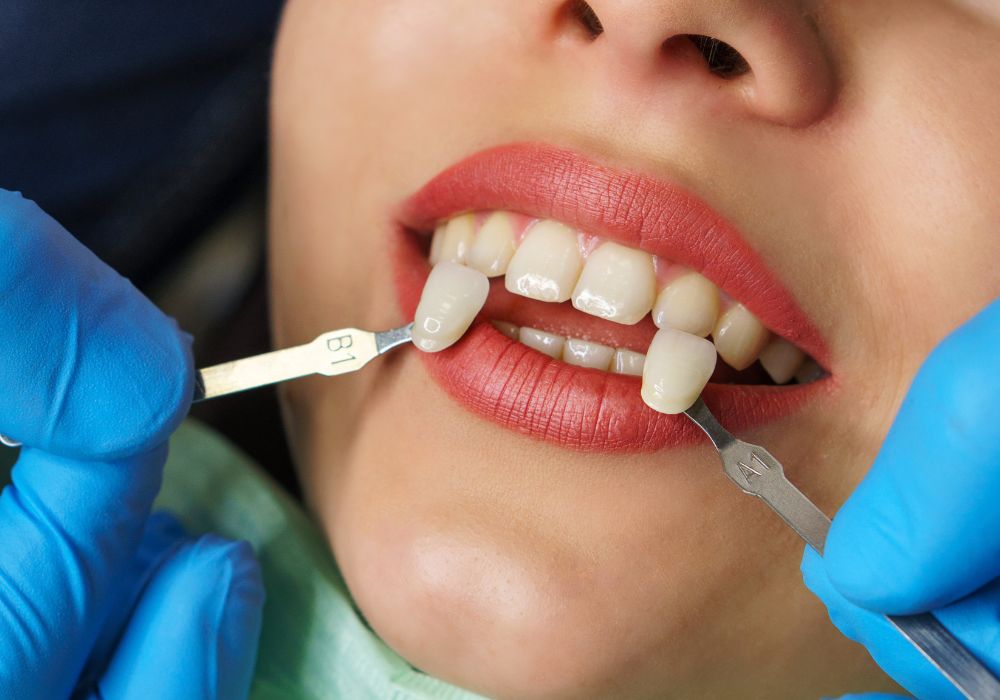
Teeth whitening is a popular cosmetic procedure that can help you achieve a brighter, more radiant smile. However, there are some potential risks and side effects associated with this treatment that you should be aware of before you proceed.
One of the most common side effects of teeth whitening is tooth sensitivity. This occurs when the whitening solution penetrates the enamel and reaches the underlying dentin, which contains nerve endings. You may experience a sharp, shooting pain or discomfort when consuming hot or cold foods and beverages. This sensitivity usually subsides within a few days after the treatment is completed.
Another potential side effect of teeth whitening is gum irritation. This occurs when the whitening solution comes into contact with the soft tissues of your gums, causing redness, swelling, and soreness. This can be prevented by using a custom-fitted tray or applying a protective gel to your gums before the treatment.
In some cases, teeth whitening can also cause damage to the enamel. This occurs when the whitening solution is left on the teeth for too long or is applied too frequently. Enamel erosion can lead to tooth sensitivity, discoloration, and even tooth decay. It is important to follow the instructions provided by your dentist or the manufacturer of the whitening product to avoid overuse.
It is also important to note that teeth whitening may not be suitable for everyone. If you have pre-existing dental conditions such as cavities, gum disease, or enamel erosion, you may need to undergo additional treatment before whitening your teeth. Additionally, if you are pregnant or breastfeeding, you should avoid teeth whitening until after you have given birth or finished breastfeeding.
Overall, teeth whitening is a safe and effective way to improve the appearance of your smile. However, it is important to understand the potential risks and side effects associated with this treatment and to consult with your dentist before proceeding.
Frequently Asked Questions
What are some safe ways to whiten teeth without damaging enamel?
There are several safe ways to whiten teeth without damaging enamel. One of the most effective ways is to use hydrogen peroxide, which is a natural bleaching agent that can break down color-causing molecules and remove those bonds. You can also try oil pulling, which helps support oral health by reducing tooth decay and gingivitis. Another safe and effective method is to make dietary changes by eliminating foods that mark the teeth and cause further staining.
What are some effective natural remedies for teeth whitening?
There are several natural remedies for teeth whitening that can be effective. Some of the most popular include baking soda, which can help to remove surface stains and brighten teeth, and apple cider vinegar, which can help to remove stubborn stains. Other effective natural remedies include activated charcoal, which can absorb toxins and remove stains, and coconut oil, which can help to remove plaque and bacteria.
How can I whiten my teeth at home without causing enamel damage?
There are several ways to whiten your teeth at home without causing enamel damage. One of the most effective ways is to use a whitening toothpaste that contains fluoride, which can help to strengthen enamel and protect against damage. You can also try using a whitening gel or strip that is designed to be gentle on enamel. Another option is to make a paste using baking soda and water, which can help to remove surface stains without damaging enamel.
Is it possible to whiten teeth without damaging enamel?
Yes, it is possible to whiten teeth without damaging enamel. There are several safe and effective methods for whitening teeth that do not cause damage to enamel. These include using hydrogen peroxide, oil pulling, making dietary changes, and using natural remedies such as baking soda, apple cider vinegar, activated charcoal, and coconut oil.
Are there any teeth whitening products that don’t harm enamel?
Yes, there are several teeth whitening products that do not harm enamel. Some of the most effective products include whitening toothpaste that contains fluoride, whitening gel or strips that are designed to be gentle on enamel, and natural remedies such as baking soda, apple cider vinegar, activated charcoal, and coconut oil.
How can I protect my enamel while whitening my teeth?
To protect your enamel while whitening your teeth, it is important to choose a method that is safe and gentle on enamel. This can include using a whitening toothpaste that contains fluoride, a whitening gel or strip that is designed to be gentle on enamel, or a natural remedy such as baking soda, apple cider vinegar, activated charcoal, or coconut oil. It is also important to avoid overusing whitening products and to follow the instructions carefully to avoid damaging enamel.

